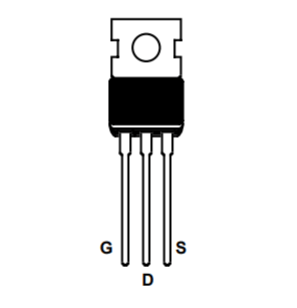Error Analysis: MOSFETs, BJTs, and PLL Control
May 19, 2020
on
on
Robert Owen is a Stenløse, Denmark-based Senior System Engineer with years of experience in various areas of electronics. Here he shares details about what he learned while designing the sync separation and tracking control for CRT-based video projectors. After using a MOSFET transistor and building a board, he quickly ran into issues. Fortunately, he solved the problem without much difficulty and learned a bit about MOSFETs, BJTs, and PLL control.

Want to share details about your electronics-relate errors and learnings? Simply fill out our "Error Analysis" form. Professional electrical engineers, makers, and EE/ECE students are welcome to contribute.
MOSFETs vs BJTs
“Many years ago, in another lifetime, I was involved in designing the sync separation and tracking control for CRT-based video projectors. In order to accommodate users that insisted their $200 video recorder was perfectly displayed on our $10,000 projectors, we needed to be able to open the PLL control loop during the head switch interval from the video recorder. The control chip had a loop control input that would do the job. So, I popped in a MOSFET transistor to act as a variable resistor and built a new board. The circuit not only did not open the loop, but it appeared to try to track the sync signal even more closely resulting in image tearing at the top of the screen. (Our projectors displayed all lines of the image unlike a TV set, which cut off 10 or lines on each end.) What I discovered is that the control input was reacting to the current injection of the control input through that giant gate - source capacitor. Replacing the MOSFET with a JFET or in our case a simple BJT solved the problem without actually requiring and layout changes.” – Robert Owen
More on MOSFETs, BJTS, CRT, and PLL Control
Want more information about MOSFETs, BJTs, and PLL control? Consider these resources from Elektor. We include some older articles that we think you fill find interesting and informative.- R. Vermeulen, "MOSFETs + extras (1)", Elektor 5/2012.
- R. Vermeulen, "MOSFETs + Extras (2): BTS432E2," Elektor 6/2012.
- Elektor’s online articles about metal–oxide–semiconductor field-effect transistors (MOSFETs)
- Elektor’s online articles about transistors
- Read Elektor’s online articles about PLLs
- G. Kleine, "1.2 GHz VCO with Linear Modulation," Elektor 7/2003.
- J. Bareford, "PLL Sine-Wave Generator," Elektor 6/1990.
- "Single-Trace CRT Converter," Elektor 6/1986.
- "PLL Systems," Elektor 4/1975.
Want to share details about your electronics-relate errors and learnings? Simply fill out our "Error Analysis" form. Professional electrical engineers, makers, and EE/ECE students are welcome to contribute.
Read full article
Hide full article


Discussion (0 comments)